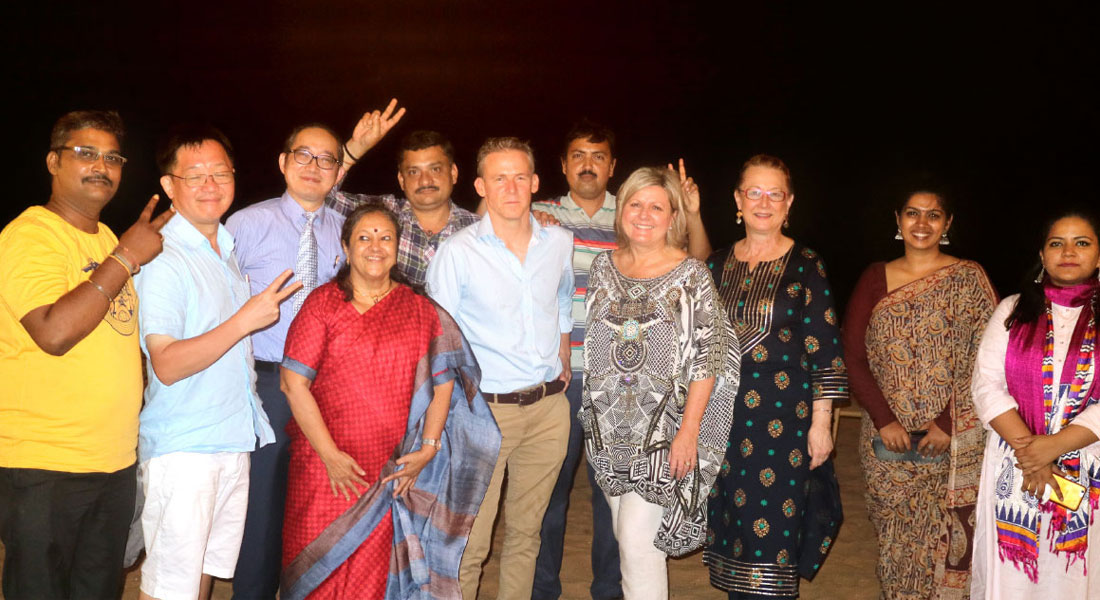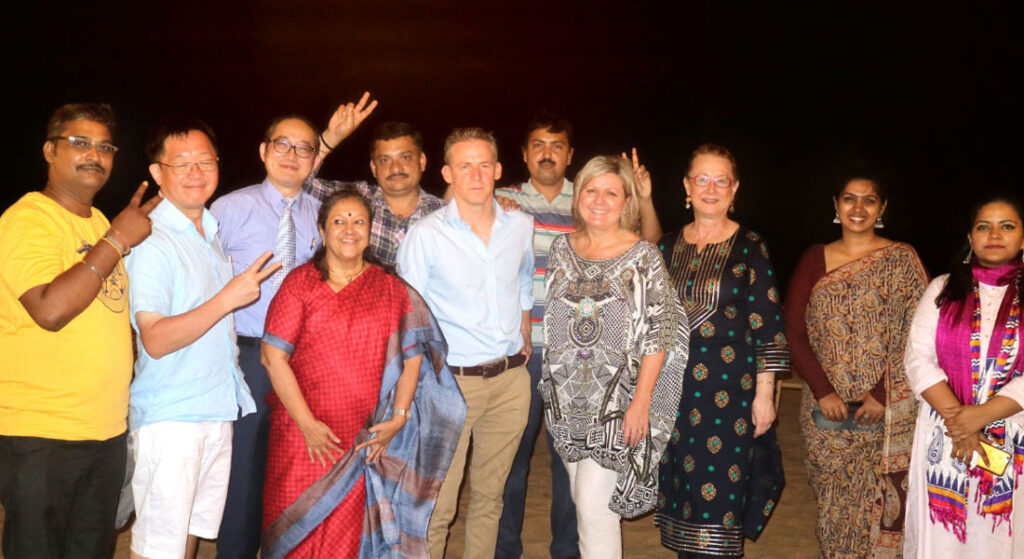An audit report card on the content, design and visual appeal of regional Rotary magazines is on the cards to expand its reach among Rotarians and others. This annual report will also consider the feedback received from a readership survey to be done in 2020–21 to understand the pulse and views of the subscribers, said David Alexander, Chief Communications Officer of RI.

In a presentation at the two-day Asia-Pacific Regional Editors Seminar hosted by Rotary News magazine, India, in Chennai, he said the upcoming licensing review of regional magazines would suggest an Advisory Board with a two-year tenure to come up with policy guidelines and initiatives to shore up the public image of Rotary through the magazines.
Presenting a communications update that would highlight Rotary’s new strategic action plan, he said the magazines need to increase their impact and expand their reach by also “engaging external audiences with content that highlights projects with broad and lasting impact.”
Magazines will have to comply with quality benchmarks in content delivery and design. A readership survey will be done for all magazines to enhance their reach and quality.
– Donna Cotter, RI Coordinator Regional Magazines
“We need a right communications approach and content strategy with a common list of priorities to take forward Rotary magazines. There are external factors such as technology, demography, social and competitive factors as well as internal drivers, namely stagnant membership, a complex hierarchy, the duality of tenure-based service versus skill-based expertise, lack of continuity and a post-polio free world which make us sit up and prepare for the challenges ahead,” elaborated Alexander.
Urging editors to vigorously adopt and propagate the “People of Action” image of Rotarians, he referred to RI’s new Vision Statement: “Together we see a world where people unite and take action to create a lasting change across the globe, in our communities and in ourselves.”
Strategic priorities
Focusing on the challenges ahead, Alexander said these included increasing membership, leveraging the polio legacy, reporting impactful projects, expanding reach with thrust on diversity, member participation and creating new channels in Rotary; and embracing research, innovation and taking risks. The Strategic Committee deliberations had urged that “we have to change our core structure right from the club-level. Our first-year initiatives will be on elevating Rotaract (and Rotaractors), and to develop online tools for training by the end of this Rotary year. Besides an effective database on Rotaractors, we need to engage around 250,000 of them at the Rotary club-level,” he opined.

Regional magazines need to appoint a public image team, adopt the People of Action message as a key mission in their stories and make good use of online tools at the Brand Centre, he said. “Talks are on with the Gates Foundation to expand its relationship with Rotary and an announcement will be made in the next International Assembly. And WHO is all set to certify Africa polio-free by the middle of 2020. Rotary clubs must share the success stories of polio with their communities.”
New licence review
One of the key highlights of the new licence review is that publishers shall be permitted to sell the magazines in retail outlets after getting permission from the RI Board. “The Advisory Board will come out with guidelines and instructions to enhance the magazine’s quality. The domains and URLs will be standardised.” When content is used from external sources like blogs and news websites, disclaimers will have to be carried, said Donna Cotter, RI Coordinator, Regional Magazines.
We need a right communications approach and content strategy with a common list of priorities to take forward Rotary magazines.
– David Alexander, RI’s Chief Communications Officer
With new branding standards coming into force, “magazines will have to comply with quality benchmarks in content delivery and design processes.” A readership survey having not more than 6–7 questions will be done for all magazines to enhance the magazines’ reach and quality. The overall design must support and be in sync with the strategic vision of Rotary, she said.
The survey being discussed and formulated by the Communications Team would be a non-intimidating way of getting opinions and feedback from subscribers who would have an opportunity to express their opinions on ways to improve the magazines. “Our research team is working on the possible questions to make the surveys effective and the results will be shared with the regional editors,” said Donna.
Print vs digital
With a literacy rate of 74 per cent and many rural markets in India yet to be explored by the print media, “newspapers and magazines are here to stay for at least 20–30 years in India. The doomsayers of print have bitten the dust as many dailies have reported a jump in circulation of late,” said Rotary News Editor Rasheeda Bhagat. “Our print edition is supplemented by an interactive website where individual articles and pictures are posted and an e-version in a pdf format with regular online updates from Rotary.org and elsewhere.”

Against a circulation of 1.28 lakh copies in print, only 4,000 Rotarians, barely three per cent, have opted for the digital version. “That tells us that print is still the king,” she said.
Also, projects that can’t go into the magazine are now carried in an exclusive e-version titled Rotary News Plus, which comes out on the 15th of every month. “We also bring out Rotaract News every quarter, print a couple of hundred copies which are sent to DRRs, DGs and senior Rotary leaders in India and Evanston. It is available online.”
A media survey has shown that 13,500 stories and articles were published on water and sanitation issues in Indian newspapers and magazines between March and August 2019, said Jyoti Rai, Senior PR Coordinator at RISAO, New Delhi. “This only points to the fact that people can relate directly to stories of human development and sufferings, if they are written well.”
A major challenge all editors face is that magazines aren’t updated about new or terminated members in a timely manner.
Jyoti’s team at RISAO is working to foster knowledge sharing, collaboration on new ideas, initiatives and to create a joint front with senior Rotary leadership on key issues. Rotary Foundation (India) is creating an exclusive website to mark the centenary celebrations of Rotary in India and share success stories. “We’re getting a PR agency to develop a good interface with the public and the media,” she said.
One of the major challenges that all editors face is that magazines aren’t updated about new or terminated members in a timely manner.
In their video messages RI Directors Bharat Pandya and Kamal Sanghvi highlighted the importance of the Rotary magazines as they were an important communication tool, and urged the editors to continue to improve their quality.
Gay Kiddle, General Managar, Rotary Down Under from Australia; Henry Y T Shao, Editor, Taiwan Rotary; and Yotharvut Vanit, Editor-in-Chief, Rotary Thailand shared their views and difficulties in running the magazine with Rotarians not paying their dues and not reporting the membership details in time.






